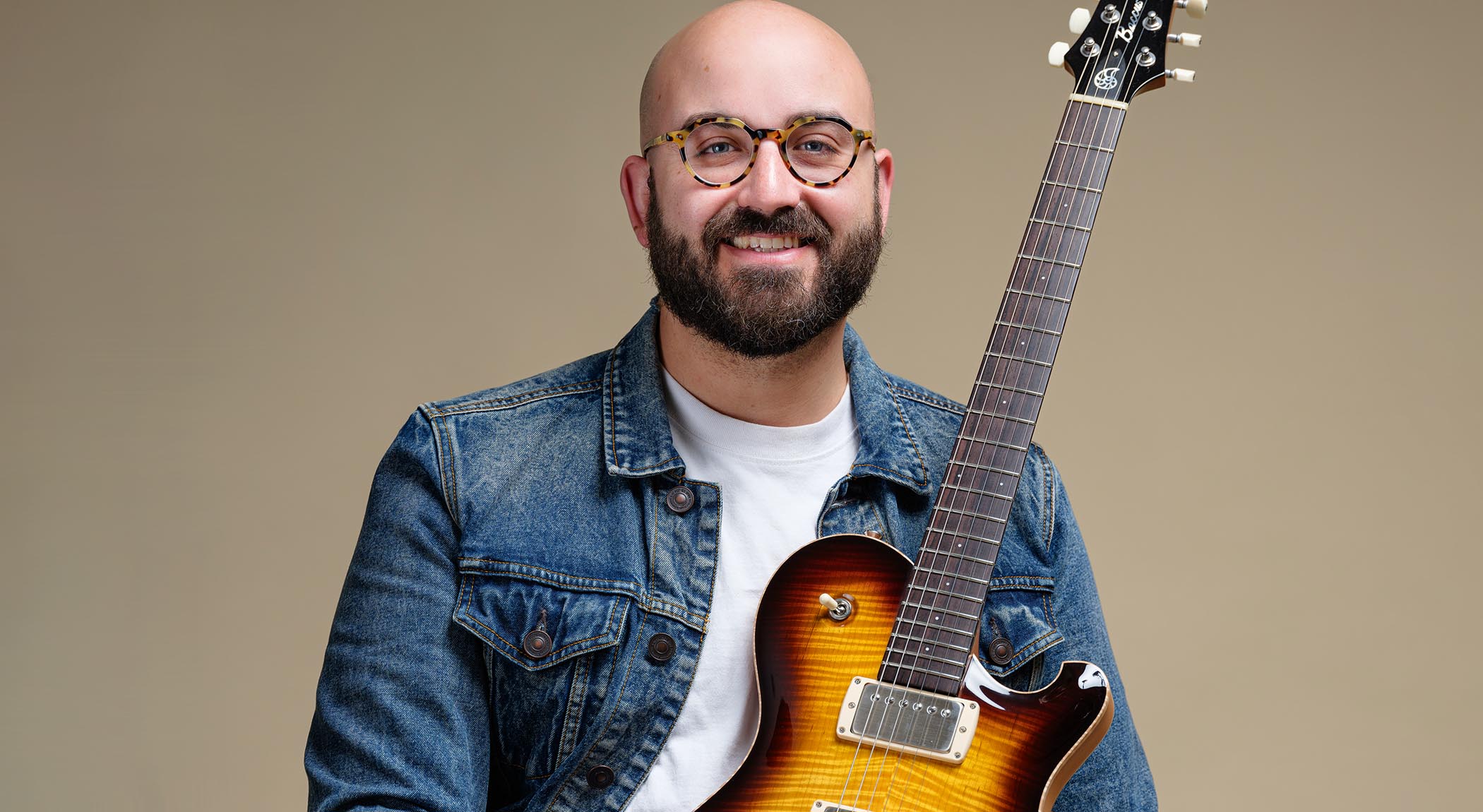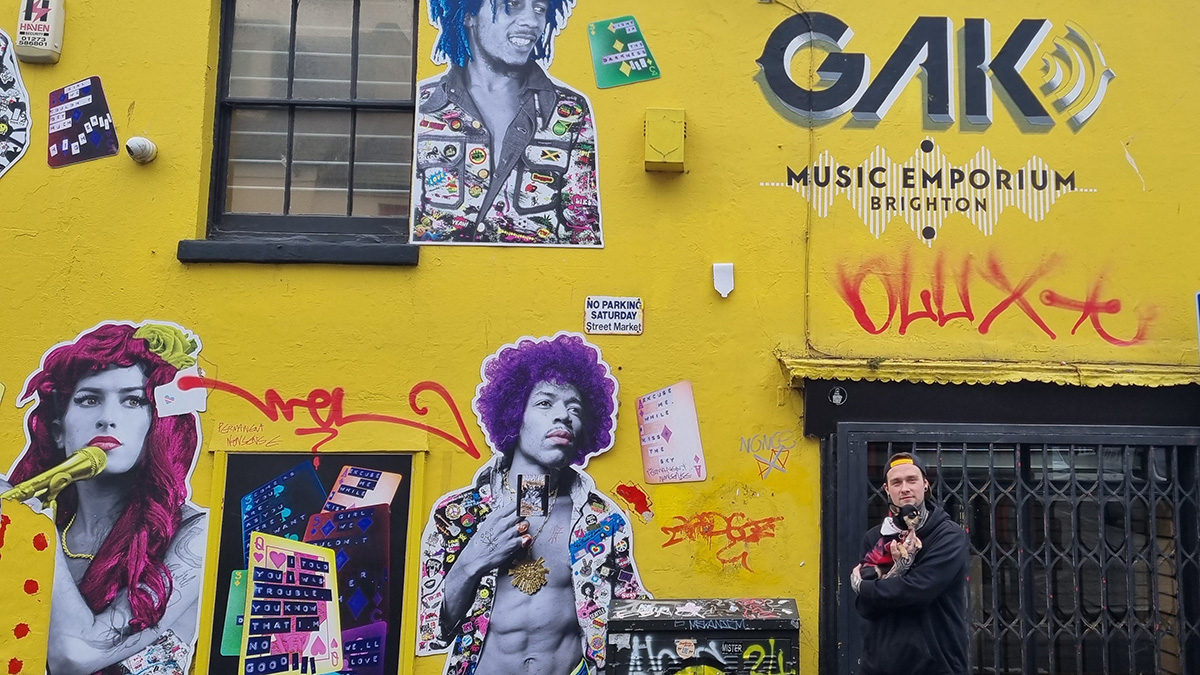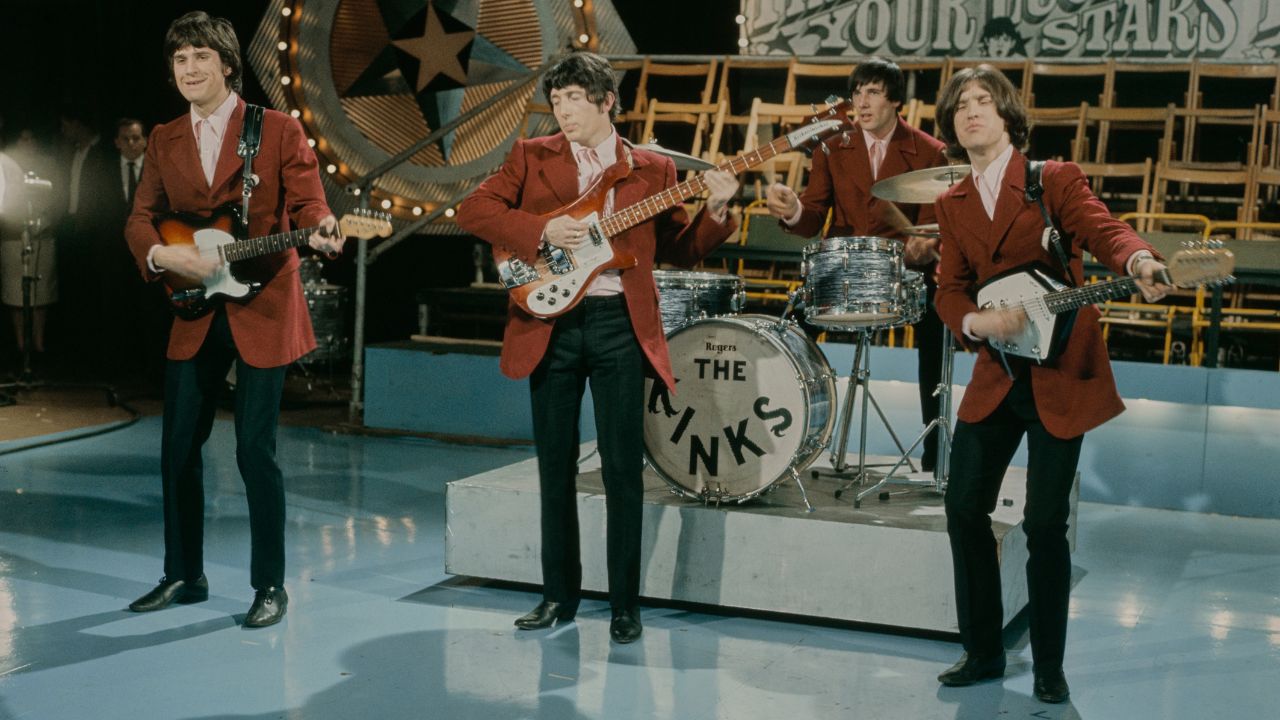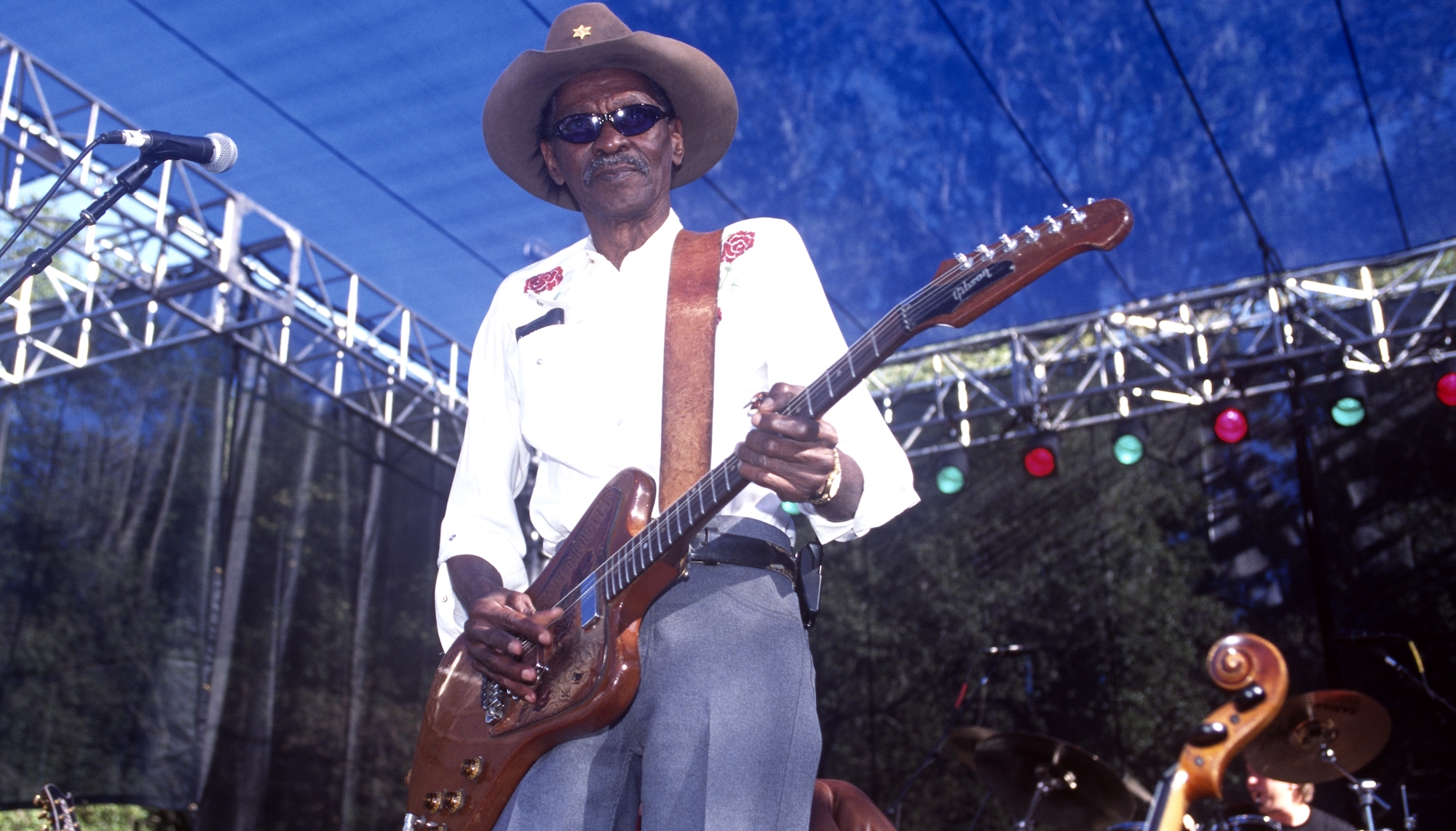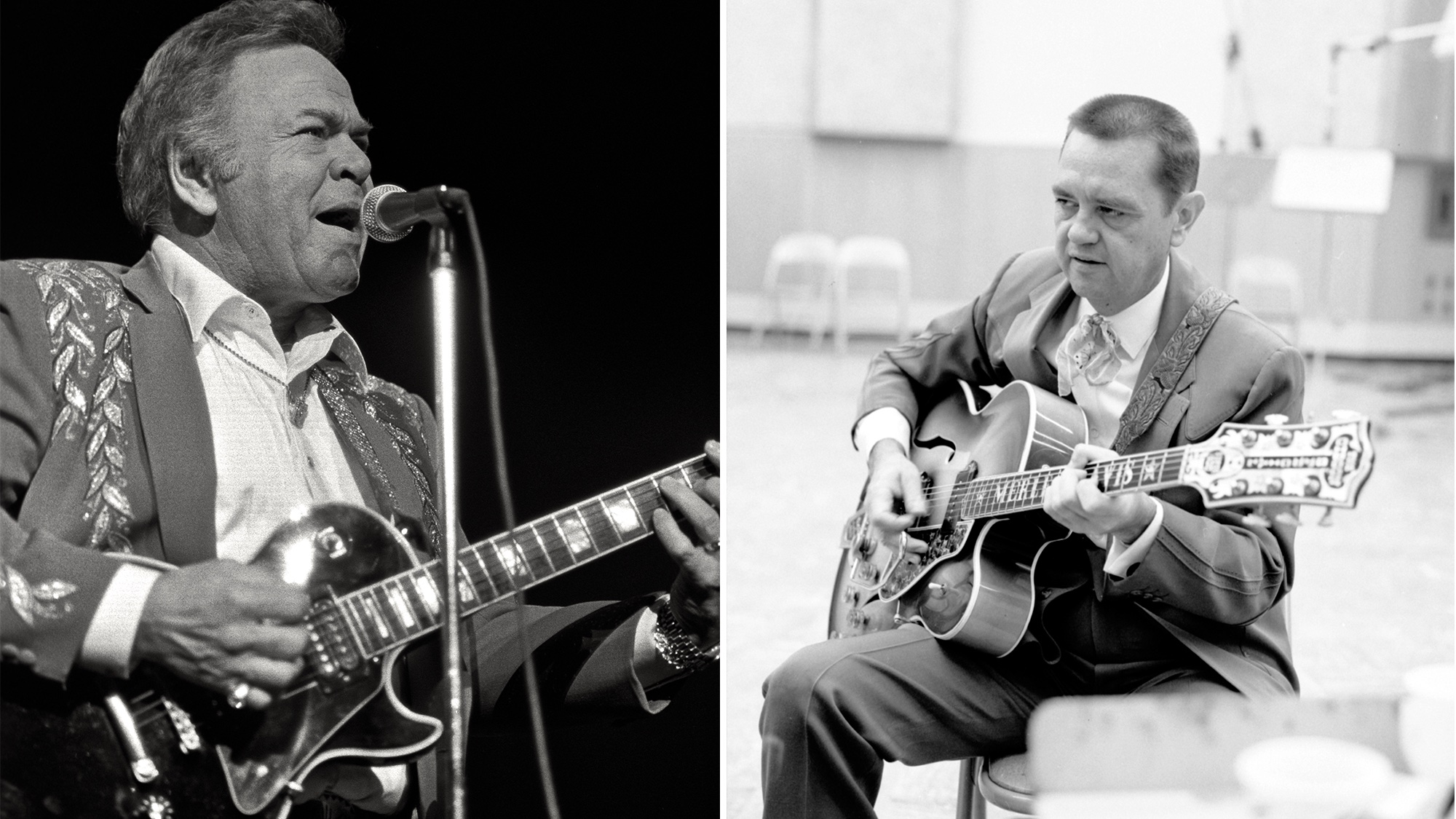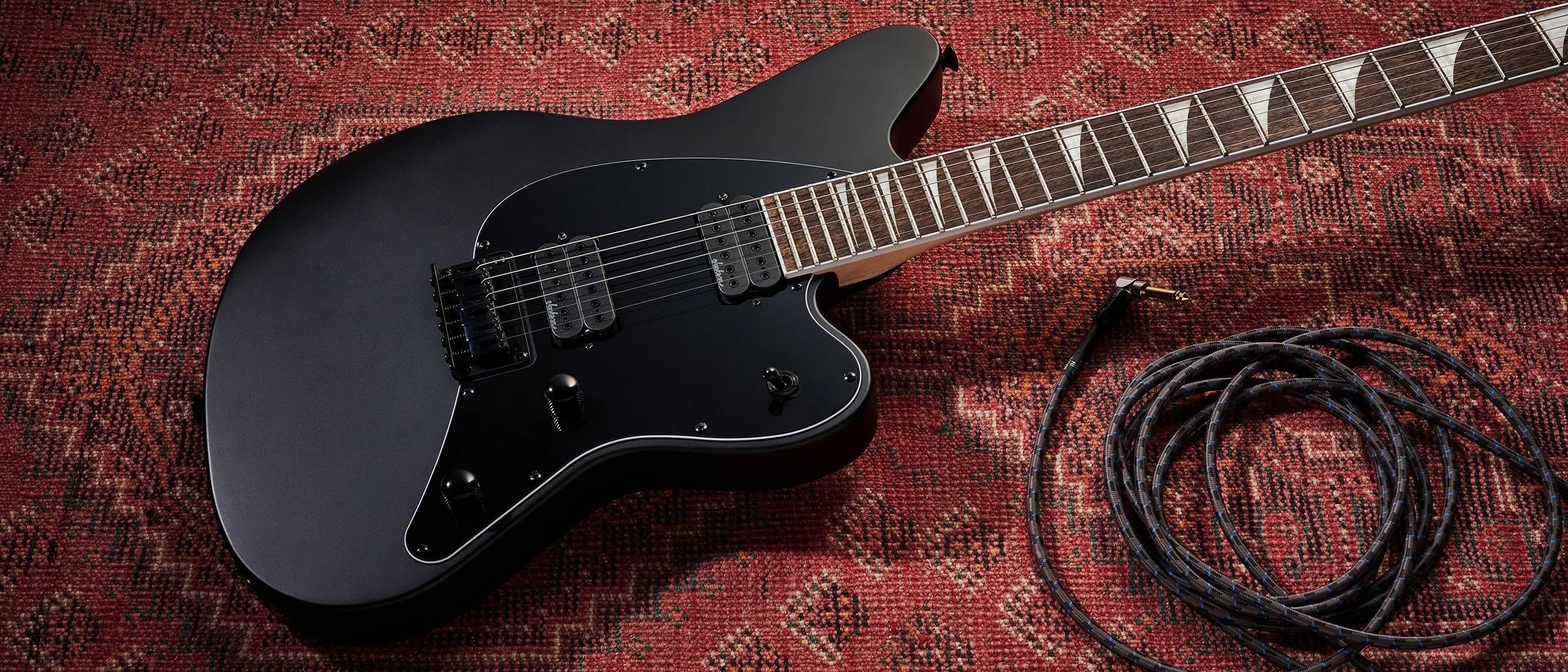Interview: Steve Vai Breaks Down His New Album, 'The Story of Light'

This story comes from the September issue of Guitar World, which also featured stories on Rush, Periphery and a special conversation between Steve Vai and Animals As Leaders' Tosin Abasi. Pick up the issue in our online store here.
“I was always one of those guys who was a seeker after truth,” Steve Vai says. “I want to know what’s going on.”
True enough. Vai’s relentless quest “to know what’s going on” has enabled him to plumb the transductive, vibratory mysteries of the electric guitar and come up with tonalities and techniques never before imagined. His place of honor in guitar history is secure. After all, of all the guitarists who emerged in the Eighties shred scene, Vai is quite arguably the most innovative. His fretboard mastery and highly innovative use of then-new technologies like the Fernandes Sustainer pickup and locking vibrato system came together to create one of the flashiest guitar styles of all time.
And he’s always pulled it off with such panache. No lame muso staring at his fretboard, Vai has never been shy about embracing rock and roll’s long tradition of over-the-top theatrical bombast. The lessons he learned onstage with rock icons like David Lee Roth and Whitesnake have been duly applied to his own live shows. It’s as much a part of his music as the obsessive musical discipline he absorbed during his years as Frank Zappa’s “stunt guitarist” and musical transcriptionist.
But even that has never gone deep enough for Vai. His musical quest has been but an outward manifestation of a profound and lifelong spiritual quest. When he says he wants to know what’s going on, he isn’t just talking about pickups and harmonic theory but also about the ultimate nature of reality itself. Spiritual and mystical themes run throughout Vai solo albums like Passion and Warfare, Sex & Religion, The Ultra Zone and Real Illusions: Reflections. The pursuit of spiritual awakening is also the theme of his new album, The Story of Light. “I’m not referring to physical light,” he says. “It’s more the divine light, the inner light, the spiritual light.”
Technically, The Story of Light is the second installment of Vai’s Real Illusions trilogy, which began with the Reflections album in 2005. The Story of Light takes the form of 12 dazzling guitar compositions that portray visions and realizations experienced by different characters in Vai’s narrative when they gaze into a reflecting pond that’s central to the plot. It’s essentially Vai’s take on the magic mirrors and enchanted ponds of mythology, fairy tales, sci-fi and other stories—symbolic portals between the ordinary world and a realm of sprit, imagination and self discovery.
“Throughout the story,” Vai says, “what happens is people come into this place where they look into this reflecting pond. And when they look into it they see these different layers of themselves. They start seeing various actions they performed, they see their past lives, they have these realizations and epiphanies. Then they finally experience the core of who they are for a moment.”
Get The Pick Newsletter
All the latest guitar news, interviews, lessons, reviews, deals and more, direct to your inbox!
Vai drew some pretty scalding criticism for the abstruse conceptual abstractions of the first Real Illusions installment, and he isn’t exactly insensitive to criticism. But he also came of age amid the pomp and circumstance of the Seventies prog-rock era, a time when lengthy concept albums based around spiritual themes were not at all unusual. This time out, though, Vai has chosen to tell his story more through instrumental music than songs with lyrics, with very rewarding results. The rock instrumental has always been his métier anyway. And thanks to Vai’s uncanny command of the electric guitar, amplification, effects and all that goes with them, listeners will feel The Story of Light’s emotions far more palpably than they will grasp its story line. His guitar conjures the epic bliss and vast unfolding vistas of spiritual awakening, the anguish of modern life’s soul-crushing rat race, the terror of apocalyptic cataclysm and the heartbreak of betrayal. The story itself? The grand concept? Like any true spiritual seeker, Vai isn’t unduly attached.
“A lot of people won’t care at all,” he says. “And that’s fine. I don’t care. It’s just an added bonus if somebody is interested in exploring that kind of stuff. And I did my best to create a record that is true to me, true to my evolution, and something I think that the people who have been following me will get a kick out of.”
But the concept does provide a neat framework for the tracks. In speaking with Vai about The Story of Light, it’s a pleasure to discover the creative processes behind each piece, catching glimpses of his obsessive mind and fearless heart at work.
“I got the title first,” he says, “and I thought about it a lot. It often happens that things will start to come to you based on what’s on your mind. So the music all started to come about based on the title. And the first song, ‘The Story of Light,’ is just that for me. I mean, I can break it down and tell you what I was imagining and how I wanted to build the tracks, if you’re interested.”
We’re all ears, Mr. Vai.
"The Story of Light"
The album’s lead track began life as a vocal tune, essentially a soliloquy by the main character, Captain Drake Mason, laying out the album’s grand concept. But Vai jettisoned the vocal fairly early on, focusing intently on the music itself.
“I wanted to do some interesting rhythmic things,” he says. “If you listen carefully inside the ocean of guitars, there’s polymeters going on with the drums and percussion. But most of all I just wanted the song to wash over you with these big, fat, rich distorted chords on seven-string guitar. So I built these chords full of grandeur.”
It is indeed a majestic track in the best prog-rock traditions. Vai is particularly proud of the guitar medley at the end. “It’s the kind of melody I really enjoy,” he says. “Pure melody. It doesn’t repeat. I sat down and thought, Okay, you’re going to do something here and it’s not going to sound like the way you play normally. I created all these mental parameters: ‘It’s all gonna be phrases that you’ve never done before, and it’s all gonna be about articulation and touch.’ So what I did was break each phrase down and record it separately, really getting forensic with it. And when I strung all these segments together, I had a statement that was very different from what I would have gotten if I’d just jammed it out.
- “And then I learned to play the complete melody from start to finish, which would have been impossible for me just to play at the beginning of the process. It’s stuff that I just couldn’t do. I had to work really hard on each phrase until the right thing happened. I can play much better than that, but that’s not what I was looking for. I was looking for something to happen that was special. And also, when you string all these things together and learn it, it changes the whole infrastructure of your musical vocabulary.”
- But what about the lyric Vai had originally penned? Fragments of it are heard as a spoken recitation in Russian. (The English lyric is printed in the CD booklet.) But why Russian?
“I didn’t want Captain Drake Mason’s explanation in English,” Vai says, “ ’cause it sounded too sleazy or something. So I thought of a lot of different languages. Because I travel so much, I know the dynamic of various languages. Italian’s very romantic. Italian sounds like music. French has this exquisiteness to it, but it has a feminine nature, too. No offense to those masculine French guys! So I went through all of these languages in my head and one of them I almost went with was Norwegian; it’s a very angular language. But I really love Russian. It has these sharp edges but a flowing softness as well. I thought, This is the language I want to use for this vital lyric that goes with the whole concept of the story. So I worked with two different translators on the lyric.”
“John the Revelator”/“Book of the Seven Seals”
The Story of Light’s third and fourth tracks are based on Blind Willie Johnson’s late-Twenties gospel-blues classic “John the Revelator.”
Johnson’s work references the Biblical book of Revelation, attributed to St. John the Divine and containing a visionary prophecy of the Apocalypse, the end of days. Revelation has provided imagery for countless heavy metal tunes, among other creative works. Vai appropriates Blind Willie Johnson’s song to convey the experiences of a character with a strong Judeo-Christian background who gazes into the reflecting pool.
The story of how Vai discovered Blind Willie Johnson’s music is intriguing. He is friends with the groundbreaking singer/songwriter Tom Waits, who turned Vai onto folklorist Harry Smith’s seminal 1952 six-album Anthology of American Folk Music, which was reissued on CD in 1997. Johnson is one of the artists represented on the compilation.
“I got this anthology, and I was just enamored with it,” Vai recalls. “I still don’t go anywhere without all of it. And when I came across Blind Willie Johnson, forget it man. That was it. I got everything he ever recorded and studied it. I have books on him. I could tell you almost everything about him. There was just something brilliantly authentic about this guy and his voice. So when I heard ‘John the Revelator,’ I thought, Oh my God, I gotta do this. I was hearing these big guitars and all this intense activity. And I just forged ahead with this idea, which was kind of crazy.”
The track starts with a snippet from Blind Willie Johnson’s original recording and quickly escalates into a balls-out rock interpretation of the song, heavily featuring Vai’s ripping lead guitar. His playing on the track sounds way more uninhibited and vicious than it has in some time. Singer Beverly McClellan throws down more soul than has possibly ever been heard before on a white-boy guitar virtuoso record. The tattooed, shaven-headed singer was a finalist on television’s The Voice. Vai discovered her at a NARAS function. (Vai is a trustee of the National Academy of Recording Arts and Sciences, a.k.a. the Grammy folks.)
“At first I was gonna sing it myself,” Vai says. “But I didn’t have the range or the intensity. And then I met Beverly, and she’s just the kind of person I like. She’s very open and accepting of everybody. Brilliantly talented. Very simple in her inspiration, but totally delivers without any excuses.”
The second half of this extended meditation on Blind Willie Johnson’s song is a choral reading taken from an arrangement originally written for a high school choir. “I went out of my way to make sure it didn’t sound too classically gospel,” Vai says, “or too Republican, white, middle America. I really wanted to come up with something that borrows from, but doesn’t plagiarize, a genre. And putting those heavy guitars under it just seemed like a really cool idea.”
Indeed, Vai’s guitar leads are the real revelation in his interpretation of “John the Revelator.” Guitar players in his particular genre, or subgenre, tend not to grasp the blues in any kind of significant way, but Vai proves himself to be the exception to that rule on this track.
“When I was growing up, the blues did seem too simple to me,” he admits. “I was just a muso. I wanted to do intense stuff with rich-sounding chords that had all these tensions. And I just got fed up with people hiding behind this false sense of integrity because they play the blues. But it was all my own projection, my own insecurities. When I let go of all that stuff, I really started to appreciate the blues. And guys like Stevie Ray Vaughan really helped with that. But when I dove into all the stuff that was actually before the blues, like Blind Willie Johnson, it was an epiphany for me. That’s what I really respond to. And, anyway, a lot of my playing was always rock derived, which is blues. The blues scale was the first thing I learned. It’s just a pentatonic scale with a flat seventh and a few notes that sound cool when you bend them. And because people have amalgamated the blues into this rock-blues scale, if you’re using it you better sound like a real authentic blues player. Whatever you play, more than anything, it’s a frame of mind more than it is technique. I started to have this deeper appreciation for all sorts of genres.”
Gearwise, Vai seems to moving in a more back-to-basics direction as well. “The older I get, the more I just like plugging directly into my amp,” he says. “I’m tired of trying to impress myself with weird sounds. It’s about the notes more. I love the sound of the Carvin Legacy head, and I really love the feel of my Ibanez JEMs, and I just go right to them. I try other stuff, and I did use some other guitars on the record for a couple of things. But I always find myself just going right back to the JEM and the Legacy. They’re built around my ear and my fingers. So straying away from them takes me out of my comfort zone.
“And it’s not because I endorse these companies. What you gotta understand is I’ve had relationships with these companies for decades. The JEM is 25 years old. I’ve been with Carvin since my days with Frank Zappa. DiMarzio I’ve worshipped since I was a teenager. We’ve just developed a new pickup together called the Gravity Storm, which is named after another new song on the album. The prototype arrived toward the end of my recording, and I used it for the rhythm guitars on the song ‘Racing the World.’ All of these pieces of gear, to me, transcend the idea of an endorsement.”
“Creamsicle Sunset”
One of the most lyrical tracks on The Story of Light is the idyllic “Creamsicle Sunset,” rife with sparkling, single-coil tones and Hawaiian-sounding pitch bends. “That song came about out of the necessity for some space on the album,” Vai says, “because of the density of the record. It was like, Okay, Vai, you gotta lighten it up. And that song just came from a riff that I found on my ‘infinity’ shelf, which is just this long shelf with little snippets of ideas. It’s a simple E triad thing that just evolved. But with any song you create a picture of what you want to sound like.”
Vai’s vision for this track was a conflation of three senses: taste, sight and sound. “Ever have a Creamsicle?” he asks. “It’s orange sherbet swirled together with ice cream on a stick. I used to love them as a kid. The way that cream blends with the orange sherbet makes for a really unique flavor. To me it creates this amazing nostalgic feeling. And in Hawaii they have these really unique sunsets that look like a Creamsicle. The sky just really explodes with this orange and cream color and this dark blue backdrop. And I wanted the song to sound like that. In fact, if you could taste the sunset, it should taste like a Creamsicle. So I thought, What would that sunset sound like if it could speak? And that’s the song.”
This is one of the tracks where Vai departed from his familiar JEM/Legacy rig. “It was an Eric Johnson [Fender] Strat directly straight into a [Fender] Bandmaster head,” he says. “Nothing else. Everything else on there is about the volume control and the vibrato bar, which is not the kind of whammy bar I’m used to, so I really had to struggle with it. But those guitars just have a sound that you can’t get anyplace else. And that’s the kind of sound I wanted.”
“The Moon and I”
One of the more impressionistic pieces on The Story of Light, “The Moon and I,” is also one of the few tracks on the album to feature a vocal performance from Vai. But the music itself, he says, “was basically an improvised track from a soundcheck in Athens, Greece, years ago. When I’m on tour, I have this policy that the band gets to the soundcheck and they get their sound together. And then when I come in, there’s a guitar on a stand in the middle of the stage, and everybody’s waiting for me to get there. I walk up and we hit the record button. I don’t know what I’m gonna play. Nobody knows what I’m gonna play. But for about an hour or so, we just jam. I start playing something and everybody follows. I might refine it a little bit. And ‘The Moon and I’ was born when I started to play these chords and realized, Oh, this is a great little track. So I stopped everybody and I just told the band, ‘Play this, then do that, then go here, then go there, then I’ll do a solo and we’ll end it.’ So we performed that song one time. The only time it was ever performed was the one time that it was written. It wasn’t practiced or anything. Then I took it back to the studio and worked on it. I put on some sound effects, I tweaked the guitar stuff and put the vocal on. But the song was there. And the solo is…whatever.”
As for the vocal, he says, “I just love singing that song. I like my voice in applications that I’m comfortable with. And I can’t worry if anybody else likes it or not. It’s my own truth and experience and something I would not normally do if I just listened to criticism.”
“Weeping China Doll”
The sixth track on The Story of Light is a dramatic instrumental that bears strong affinities to an enka, a Japanese sake ballad. Enka is essentially Japanese culture’s equivalent of a “crying in your beer” song of heartbreak and sorrow. And Vai milks the idiom’s emotional potential for all it’s worth, tearing off soaring, quasi-Asian pentatonics to an insistently heavy ballad beat. The music has a rather interesting origin as well.
“What is funny is ‘Weeping China Doll’ is the name of a rose,” Vai says. “We have this fence we put up and my wife planted these roses, these Weeping China Dolls, and they grew along the fence. And when you look at the fence and the roses, it looks like music on a staff. So I took photos and I transcribed it. I said, ‘I wonder what this sounds like.’ And I found the melody to ‘Weeping China Doll’ from the Weeping China Doll roses that grew on the fence.
“I started hearing the melody and it all started coming together. I wanted it to have this intense feel but also have this beautiful silver lining of hope. It has a Japanese sound to it, but I didn’t want to call it ‘Weeping Japanese Doll.’ And by the way, I do know that it sounds Japanese. I do know the difference between what Japanese and Chinese music sounds like.”
“No More Amsterdam”
The seventh song on Steve Vai albums are always ones that hold a special place in the tune stack and in his heart. It’s usually a ballad, and Vai serves up a nice one on The Story of Light in the form of “No More Amsterdam.” As usual with Vai, it’s not just another pretty tune but also plays a role in the album’s concept and story line.
“This guy looks into the reflecting pond and he confronts his guardian angel,” Vai explains. “He sees his life and he realizes how this guardian angel had been with him through all of it, advising him, giving him inclinations and feelings that he would sometimes listen to and sometimes he wouldn’t. Which is the story of all of us. We deny our better judgment sometimes. And that’s basically what it’s about. But when you come face to face with somebody or an entity that is a form of that better judgment, and you have a conversation with them…that’s what I wanted the song to be.”
“No More Amsterdam” is Vai’s other vocal performance on The Story of Light, only this time he’s joined on vocals by singer/songwriter Aimee Mann. The two of them go back a long way together.
“Aimee lived a couple of doors down from me when we were both going to Berklee,” Vai recounts. “And my girlfriend at the time, Pia, who’s now my wife, was very good friends with Aimee. They actually had a little band together. So they kept in touch over the years, and as a result Pia was listening to Aimee’s music a lot. I was listening to it a lot too. And there was something about Aimee that really resonated with me. Something about her voice. There’s a sincerity there and almost a vulnerability, but there’s also a sense of equilibrium. I like that a lot. I like her lyrics a lot. She’s like a poet. The more I read into the lyrics the more I think, Wow, there’s something here that’s really beautiful and interesting.
“So I was having trouble writing the lyrics for ‘No More Amsterdam,’ because I’d recorded the whole song before I came up with anything else. I knew how I wanted the melody to go, but I was stuck for words. And Pia said, ‘Why don’t you call Aimee?’ And I thought, Oh, she wouldn’t want to do it. I had this preconceived idea that she just thought I was this wanky shredding guitar player that had nothing to do with what was cool—just some longhaired fusion muso from Berklee. That was my own projection. And it was a very wrong one. But it was just an insecurity I had. She was so cool in school, and she’s so brilliant; I didn’t think she’d be interested in working with me. But I sent her the track, and when I spoke with her she said, ‘I really like this. I’d love to work with you.’ We got together, and I realized, She doesn’t really think that about me at all.”
Like any artist, Vai has had his share of wrestling matches with insecurity. And it’s often the artists who are regarded as paragons of technique and accomplishment who are hardest on themselves.
“As a guitarist, you’re always sizing yourself up,” he says. “You wanna see how you stack up. ‘Am I good enough? Do I make the grade?’ A lot of guitarists will tell you, ‘Oh, I don’t feel that way.’ Maybe they don’t. I did. And I still do, to a degree, but it’s not how I think the majority of the time now. That perspective has changed. When you let go of that kind of thinking it alleviates all this weight and tension. That’s a great thing, because it makes you more free to express yourself, and it makes you more appreciative of what others do. For me now, there’s no difference between watching a tribe in Africa do a ceremonial dance and watching a glam band on the Sunset Strip. They’re both manifestations to this primal instinct to be expressive. One of the greatest things we do as humans, and one of the reasons why I think we’re here, is to be creative. And everybody is creative in a different way.”
Vai’s self-critical nature, his technical and sonic perfectionism and his tendency to think very deeply about every aspect of an album project all go a long way toward explaining why seven years separate his new release from his last studio solo album. Work on The Story of Light began at his Hollywood recording studio, the Mothership, while construction was completed at his newer facility, the Harmony Hut, nearby in Encino. Once that state-of-the-art room and its custom Inward Connections/Tree Audio console was complete, the project was finished there.
“I’m really happy with the album,” he says. “But it’s probably the last record that I will make like this, because it really wears me down. I do everything myself—produce it, engineer it, mix it. I get in there and tweak everything. And as a result of doing it that way, all my records have a particular sound. But in my mind, I’m hitting a wall creatively. It’s like, ‘I did it, I did it, I did it, and then I did it again.’ I’m ready to move on.”
Does that mean there won’t be a third installment of the Real Illusions trilogy?
“No,” says Vai, “I will do a third one. But I may not record it the same way that I recorded this one. I have great ideas for what I’d like to do in the future. I’d like to get together with various engineers who know how to do the legwork really well. But as far as a producer, I’d like to work with somebody who is not a musician but is very creative. I’d be interested to see how things would turn out if I go to someone like [film directors] Jim Jarmusch or James Cameron on a track. Or [spiritual teacher] Eckhart Tolle or [video producer] Chris Cunningham or [film director] Harmony Korine. I’ve got a whole list at home.”
For the moment, though, Vai’s focus is on touring for The Story of Light. He’s bringing the aforementioned Beverly McClellan with him to do an opening set and perhaps join his band for “John the Revelator” and “Book of the Seven Seals.” Vai’s touring group will also include harp player Deborah Hensen-Conant, who performed on another Story of Light track, the Irish lullaby “Mullach a’ tSi.”
“She’s the hip harpist,” Vai says of Hensen-Conant. “I discovered her on the internet. My wife plays the harp and knew about her. She has this energy and expression that’s just so revitalizing and fulfilling. And she plays the harp unlike anybody else. I’ve discovered that there’s a lot of arpeggiated stuff in my music that really works great on harp. What we’re doing with the instrument you’re not going to believe. She’s got distortion on it: she’s got a slide. We’re doing the ‘Crossroads’ duel. Me, her and Dave Winger worked out with the three of us, and it’s really entertaining. And I’ve given the first round of ‘For the Love of God’ entirely to her. It’s just gorgeous. It’s that melody the way it should be played. I had it on the violin before and it was real pretty, but there is something about the harp that just lifts you way up.”
Vai is always full of surprises and never at a loss for creative ideas. But his guitar virtuosity remains consistently at the heart of all his endeavors.
“People might say, ‘What does he need a harp for?’ ” Vai shrugs. “Well, you know what? It’s just another musical dimension, and it’s fun. But if you go to the concert, you’re still gonna get your head ripped off by my guitar.”
Steve Vai's latest album, The Story of Light, is out now. Pick it up on iTunes here.
